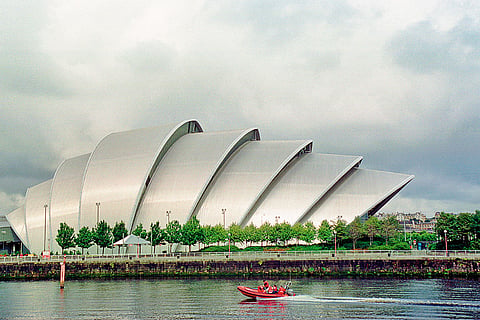Journey of COP: What Has The UN Body Achieved So Far?
Over three decades, COP has achieved significant breakthroughs that have led to historic treaties shaping climate policy
At the third COP in Kyoto, Japan in 1997, world leaders adopted the Kyoto Protocol. It was the first time countries were legally required to cut their emissions. Wealthier countries agreed to lower emissions by 5% of 1990 levels, aiming to achieve this target by 2012.
The protocol recognised that developed countries were historically responsible for the most greenhouse gas emissions and should take the lead to reduce them.
The protocol also introduced market-based tools such as emissions trading, the clean development mechanism (CDM) and joint implementation, which allowed countries to meet part of their targets by investing in emission reduction projects in developing nations.
Although the Kyoto Protocol set legally binding targets, it ran into a number of challenges. Major emitters such as the United States and some other developed countries did not ratify it, while many developing countries were not required to cut emissions, which led to criticism about the limited effectiveness of the protocol.

Global Cooperation in Paris
Fast forward to 2015 and the Paris Agreement at COP21. The agreement was adopted by 196 parties and came into force on November 4, 2016. One of its goals was to limit temperature rise to 1.5 degrees Celsius.
It also included provisions for nationally determined contributions (NDCs) that would be updated every five years and plans to reduce emissions. Developed countries committed to mobilising $100bn annually by 2020 to support climate action in developing countries.
The Paris agreement pledged to support vulnerable nations with finance, technology and capacity-building
The agreement pledged to support vulnerable nations with finance, technology and capacity-building. Parties were bound to a legally binding system for tracking and reporting progress and submitting and communicating their NDCs.
What Have We Achieved So Far?
The agreement spurred the development of low-carbon solutions and new markets, with many countries, regions, cities and companies now setting carbon neutrality targets.
Sectors such as power and transport, which comprise 25% of global emissions, already have competitive zero-carbon solutions. By 2030, they may be able to compete in industries responsible for more than 70% of emissions, opening more business prospects for those who embrace these changes and accelerating the transition to a sustainable economy.
The agreement is seen as a diplomatic success, however, it left key challenges unresolved, such as ensuring accountability and securing enough funding for vulnerable nations.

Glasgow: Building on Paris
At COP26 in Glasgow, Scotland, countries reaffirmed their commitments under the Paris Agreement and agreed to several key initiatives to accelerate climate action.
COP26 saw a number of key outcomes, of which one was “phasing down coal”. For the first time, COP included a specific commitment to “phase down” the use of coal, the most carbon-intensive fossil fuel. Another outcome was deciding to double adaptation finance. Countries committed to doubling finance for adaptation by 2025, recognising the need for vulnerable nations to build resilience against climate impacts.
For the first time, COP included a specific commitment to “phase down” the use of coal
A third outcome at Glasgow related to methane emissions reduction. The global methane pledge was launched, with over 100 countries committing to reduce methane emissions by 30% by 2030.
COP26 also established the Glasgow Financial Alliance for Net Zero (GFANZ), a coalition of over 500 financial institutions committed to aligning their portfolios to achieve net-zero emissions by 2050.

A Turning Point in Dubai
COP28 set the stage as the most prominent climate summit ever, uniting 85,000 participants from across the globe, including over 150 world leaders. This diverse assembly comprised government delegations, civil society, indigenous peoples, youth organisations, businesses and international bodies, all showcasing a shared commitment to achieving climate goals.
The summit marked a crucial milestone—the first-ever global stocktake under the Paris Agreement. The evaluation and assessment revealed the need to speed up progress in critical areas such as, reducing greenhouse gas emissions, enhancing climate resilience and mobilising financial and technological support.
COP28 concluded with bold commitments to accelerate action for combating climate change. The first was ramping up 2030 climate targets. A clarion call was made to enhance climate commitments substantially.
The second was making the transition to renewable energy. Governments were urged to swiftly transition from fossil fuels to renewable energy sources, particularly in favour of wind and solar power.